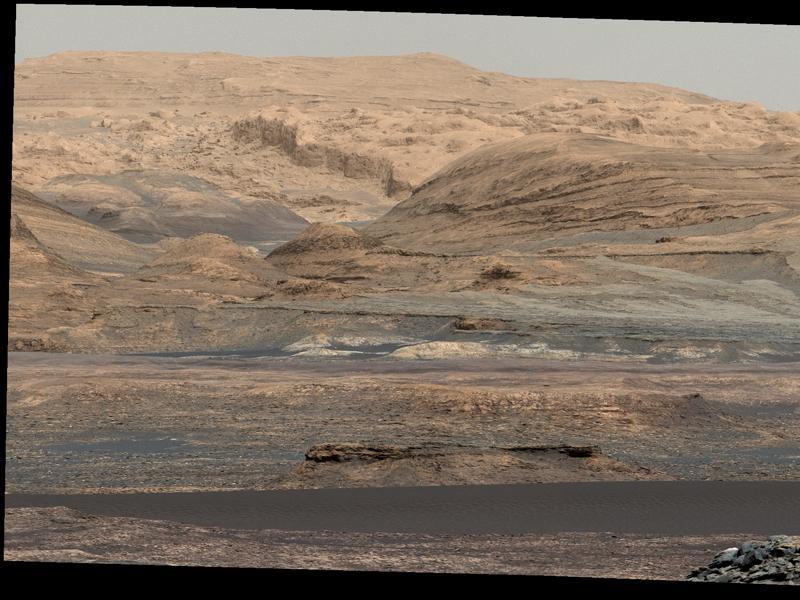NASA’s Curiosity finds silica deposits on Mars
NASA’s Mars Curiosity rover has found high concentrations of silica - a rock-forming chemical commonly seen on Earth as quartz - which could help scientists learn more about the ancient wet environment on the red planet.

NASA's Mars Curiosity rover has found high concentrations of silica - a rock-forming chemical commonly seen on Earth as quartz - which could help scientists learn more about the ancient wet environment on the red planet.
Curiosity found much higher concentrations of silica at some sites it has studied in the past seven months than anywhere else it has visited since landing on Mars 40 months ago.
Silica makes up nine-tenths of the composition of some of the rocks. It is a rock-forming chemical combining the elements silicon and oxygen, commonly seen on Earth as quartz, but also in many other minerals.
"These high-silica compositions are a puzzle. You can boost the concentration of silica either by leaching away other ingredients while leaving the silica behind, or by bringing in silica from somewhere else," said Albert Yen, a Curiosity science team member at NASA's Jet Propulsion Laboratory in California.
"Either of those processes involve water. If we can determine which happened, we'll learn more about other conditions in those ancient wet environments," said Yen.
Water that is acidic would tend to carry other ingredients away and leave silica behind. Alkaline or neutral water could bring in dissolved silica that would be deposited from the solution.
The recent findings on Mount Sharp have intriguing threads linked to what an earlier NASA rover, Spirit, found halfway around Mars. There, signs of sulfuric acidity were observed, but Curiosity's science team is still considering both scenarios to explain the findings on Mount Sharp.
Some silica at one rock Curiosity drilled, called "Buckskin," is in a mineral named tridymite, rare on Earth and never seen before on Mars.
The usual origin of tridymite on Earth involves high temperatures in igneous or metamorphic rocks, but the finely layered sedimentary rocks examined by Curiosity have been interpreted as lakebed deposits.
Furthermore, tridymite is found in volcanic deposits with high silica content. Rocks on Mars' surface generally have less silica, like basalts in Hawaii, though some silica-rich (silicic) rocks have been found by Mars rovers and orbiters.
Magma, the molten source material of volcanoes, can evolve on Earth to become silicic. Tridymite found at Buckskin may be evidence for magmatic evolution on Mars.
Curiosity has been studying geological layers of Mount Sharp, going uphill, since 2014, after two years of productive work on the plains surrounding the mountain.
The mission delivered evidence in its first year that lakes in the area billions of years ago offered favourable conditions for life, if microbes ever lived on Mars.
As Curiosity reaches successively younger layers up Mount Sharp's slopes, the mission is studying how ancient environmental conditions evolved from lakes, rivers and deltas to the harsh aridity of today's Mars.
Catch all the Latest Tech News, Mobile News, Laptop News, Gaming news, Wearables News , How To News, also keep up with us on Whatsapp channel,Twitter, Facebook, Google News, and Instagram. For our latest videos, subscribe to our YouTube channel.































